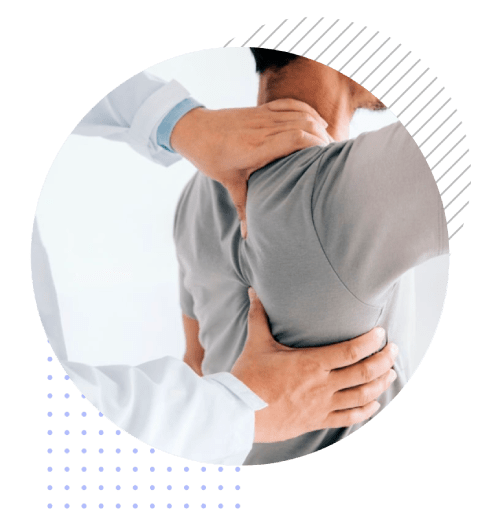
Physiotherapy helps people restore, maintain, and improve physical functioning that has been impaired due to an injury, illness, or condition.
Rehabilitation services aim to assist individuals in reaching their full functional potential following an injury or a condition through different treatments and exercise programs.
Physiotherapy and rehabilitation can help you feel better and regain mobility, whether you’re recovering from an injury or want to relieve the pain of a chronic condition.
At Orthomed Hospital, we offer the best in physiotherapy and rehabilitation services. Our staff is composed of highly qualified professionals with decades of combined experience, guaranteeing you will receive quality and top-notch care. Our mission is to make sure that everyone who comes to us feels safe and confident in our treatments and has access to comprehensive information to help make an informed decision about their health and recovery.
Physiotherapy and rehabilitation help alleviate pain and restore mobility to those affected by physical injuries or chronic conditions. Many different types of treatments can be chosen, including massage therapy, hydrotherapy, ultrasound therapy, and exercise programs. The following are some common physiotherapy and rehabilitation techniques:
Geriatric physiotherapy is a type of physical therapy that focuses on older adults. It is meant to reduce pain, increase mobility and balance, improve posture and breathing, enhance strength and flexibility, boost coordination, and manage age-related conditions or injuries resulting from falls or other accidents. Geriatric physiotherapists can also help with the prevention of major diseases like dementia
Women’s health in physiotherapy is all about helping women stay active and healthy so they can better handle their daily activities. Women's health usually relates to treating specific conditions such as urogynecology, pregnancy-related conditions, pelvic floor dysfunction, and chronic pain. Physiotherapists can also provide advice on exercise, nutrition, and lifestyle to help women optimize their overall well-being.
Neurological Physiotherapy involves assessing and managing the physical health of patients with neurological conditions, including stroke, spinal cord injury, brain injury/diseases, and Multiple Sclerosis. By providing specialised treatment plans tailored to each individual's needs, this therapy encourages them to reach their highest level of functional independence and well-being.
Pediatric physiotherapy is a field of therapy that focuses on helping babies and children with neuromuscular and musculoskeletal problems. It relies on movement and exercise, manual skills, and training to improve the physical development of young people.
Musculoskeletal physiotherapy is a form of physical therapy that uses manual techniques, exercises, and other treatments to improve the performance of your musculoskeletal system. It focuses on restoring normal movement patterns and strength, as well as helping you manage pain and injuries.
Rehabilitation and physical therapy aid in reducing pain, regaining function, and hastening the healing process. You should go to a rehabilitation facility if you have recently finished receiving treatment for an accident, work-related, or sports injury.
Physiotherapists utilize the manual treatment approach to move and manipulate painful joints by rubbing them with their hands.
Different types and sizes of electromagnets are readily accessible, and they may be used independently with the help of a qualified expert.
Specific body areas are injected with tiny needles, which temporarily relieve discomfort.
With the use of tape, the skin is lifted away from the connective tissue, creating more room and improving the flow of lymph fluid.
To restore normal joint mobility, a physiotherapist uses this form of manual treatment to mobilise the joints at various speeds, depths, and amplitudes.
Physiotherapists provide instruction in a variety of exercises and body-stretching methods that aid in regaining joint motion.
Physiotherapists provide specific programmes and inform their patients about taking charge of their health and fitness.
The use of therapeutic massage or soft tissue mobilization helps to loosen up tense muscles, lessen discomfort, and reduce swelling.
Exercises that increase range of motion are used to reduce muscle stiffness and increase joint mobility.
At Orthomed Hospital, we have the highest quality medical equipment, experienced physiotherapists, and the latest knowledge on all things related to rehabilitation. Our commitment to excellence makes us the premier hospital for anyone needing assistance in these areas.
Quick Links
Quick Links
Services
Orthomed Hospital, Sector 15 AP, Kaimri road, Hisar, Haryana- 125001